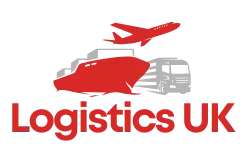Table of Contents
Once dismissed as a relic of the past, cold calling is back in the mix—but it’s leaner, smarter, and much more human. We’re no longer in the era of robotic scripts and blind outreach. The modern cold call sounds more like a conversation you’d want to have.
This article breaks down what’s changed in cold calling 2025, what’s working now, and how smart teams are adapting their B2B outbound strategy to cut through the noise.
From Scripts to Smart Conversations
For years, cold calling was all about the script—word-for-word lines designed to “overcome objections” and keep prospects on the phone. But here’s the thing: everyone got the same pitch. And buyers got tired of it.
Now, the best calls don’t feel “cold” at all. With AI-driven suggestions, sales development trends such as real-time coaching tools and smarter CRMs enable reps to adjust in the moment.
The focus has flipped. Instead of pushing a pitch, top-performing reps ask sharper questions, adapt their tone, and stay curious. The goal isn’t to close on the call—it’s to open a real conversation.
The Power of the First 15 Seconds
The first 15 seconds of your cold call set the tone—and often decide whether the rest of the call even happens. Buyers don’t have time for fluffy intros, vague intentions, or obvious scripts. If your opener doesn’t align with your prospect’s challenges or your B2B outbound strategy, you’re done.
Your goal isn’t to trick someone into staying on the line—it’s to earn it with relevance. That means referencing something they care about, hinting at the value you can bring, and coming across as a genuine person.
What to say:
- “Hey [Name], I’ll be brief—noticed [Company] just rolled out [X]. Are you involved in that project?”
- “Quick one: Are you the right person to talk to about streamlining [specific process] at [Company]?”
- “Saw your post on [platform] about [topic]. Mind if I ask a quick follow-up?”
What to avoid:
- “Hi, I’m calling from [Company Name]. We help businesses like yours…”
- “Can I take a few minutes of your time today?”
- “How are you doing today?” (Generic, and they know you don’t care.)
You don’t need to impress people. You need to hook them. Curiosity, relevance, and confidence always prevail over politeness and small talk.
Also Read: Top Connectivity Options for Tourists in Japan
Objection Handling in Real Time
Objections aren’t roadblocks—they’re part of the game. But in 2025, it’s not about memorizing rebuttals or trying to “win” the conversation. It’s about managing resistance with empathy and skill, so the door stays open for next steps.
Some objections never change:
- “We’re not interested.”
- “Already using someone.”
- “No budget right now.”
But the best reps in SDR outreach don’t panic. They don’t bulldoze through objections. Instead, they pause, reflect on what they heard, and turn the objection into a conversation.
Use a flexible framework like this: Acknowledge → Reframe → Ask a question
- “Totally hear you—others in your role felt the same before we spoke. Out of curiosity, what’s not working about your current solution?”
- “I get that timing’s not ideal. When do you usually evaluate new vendors?”
This approach keeps the rep in control without sounding defensive or desperate. And sometimes, objection handling isn’t even needed—because the messaging was strong and relevant from the jump.
The real skill? Not just overcoming objections, but preventing them by being so tuned in that the prospect doesn’t feel the need to push back.
Cold Calling as Part of a Multichannel Strategy
Cold calling still works in 2025—but only if it’s part of a larger plan. The days of “dial until they buy” are over. One channel alone isn’t enough to break through. Prospects are busier, harder to reach, and more selective with their attention.
That’s why top teams blend calls with other touchpoints—personalized emails, LinkedIn messages, and smart lead generation tools that support the entire funnel. For example, platforms like https://salesar.io help sales teams scale multichannel outreach.
You might not get a reply to your email, but it could warm up your call. Or maybe your call doesn’t land, but your follow-up on LinkedIn does.
The real magic is in the sequencing:
- Day 1: Email + LinkedIn connection request
- Day 2: Cold call
- Day 4: Follow-up email referencing the call
- Day 6: LinkedIn comment or DM
- Day 8+: Targeted retargeting ad or another call
Timing matters just as much as content. If a call comes too early, they’ll forget who you are. Too late, and you miss the window. Smart sequencing creates familiarity, relevance, and trust before the conversation even begins.
Cold calling 2025 is no longer a solo act—it’s the human touch behind a smart, multi-touch B2B outbound strategy.
Final Thoughts
The best sales teams aren’t dialing blindly; they’re leading informed conversations backed by research, powered by smart tools, and supported by multichannel strategies.
Success in cold calling lies in blending technology with human connection — knowing when to lean on lead generation tools, when to personalize your SDR outreach, and when to listen.

